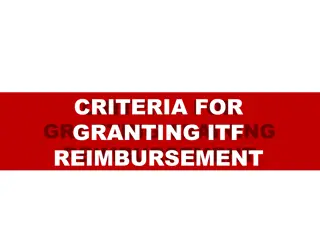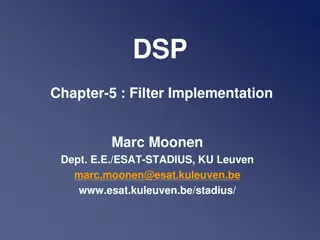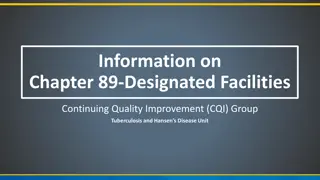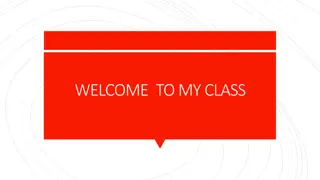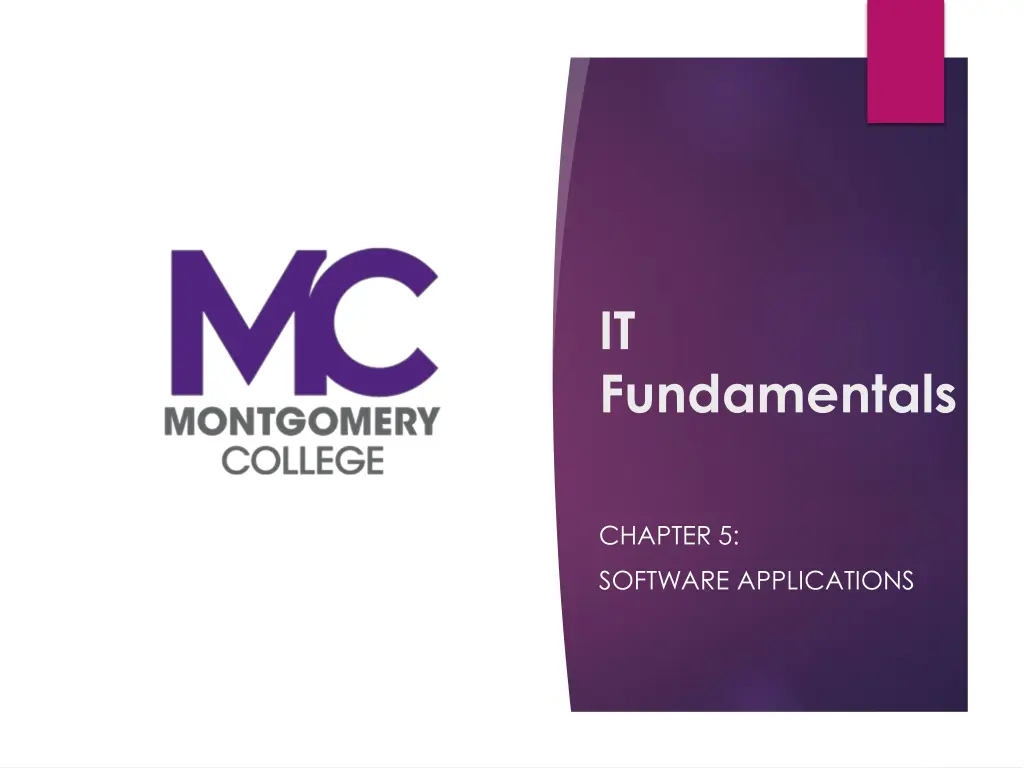
Understanding Software Applications: Architecture, Delivery, and Usage
Explore the purpose, proper use, and delivery methods of software applications such as productivity tools, web browsers, and business software. Learn about application architecture models, installation best practices, and browser configuration tips. Understand the concepts of single-platform vs. cross-platform software, compatibility concerns, and licensing requirements. Dive into application design concepts and architecture models to enhance your understanding of software delivery methods.
Download Presentation

Please find below an Image/Link to download the presentation.
The content on the website is provided AS IS for your information and personal use only. It may not be sold, licensed, or shared on other websites without obtaining consent from the author. If you encounter any issues during the download, it is possible that the publisher has removed the file from their server.
You are allowed to download the files provided on this website for personal or commercial use, subject to the condition that they are used lawfully. All files are the property of their respective owners.
The content on the website is provided AS IS for your information and personal use only. It may not be sold, licensed, or shared on other websites without obtaining consent from the author.
E N D
Presentation Transcript
IT Fundamentals CHAPTER 5: SOFTWARE APPLICATIONS
Explain the purpose and proper use of software Explain methods of application architecture and delivery models Productivity software Application delivery methods Word processing software Locally installed Network not required Spreadsheet software Application exists locally Presentation software Chapter 5: Software Applications Web browser Files saved locally Visual diagramming software Local network hosted Network required Collaboration software Internet access not required Email client Conferencing software Cloud hosted Instant messaging software Internet access required Online workspace Service required Document sharing Files saved in cloud Business software Application architecture models Database software One tier Project management software Two tier Business-specific applications Three tier n-tier Accounting software
Given a scenario, configure and use web browsers Caching/clearing cache Deactivate client-side scripting Browser add-ons/ extensions Compare and contrast general application concepts and uses Single-platform software Cross-platform software Compatibility concerns Chapter 5: Software Applications (con t) Add Licensing Remove Single use Enable/disable Private browsing Proxy settings Certificates Group use/site license Concurrent license Open source vs. proprietary Valid Subscription vs. one- time purchase Invalid Popup blockers Script blockers Compatible browser for application(s) Product keys and serial numbers Software installation best practices Reading instructions Reading agreements Advanced options
Application Design Concepts Software platforms what does the software work on? Single platform Cross-platform Locally installed Local network hosted Cloud-based Delivery methods
Application Architecture Models 1 tier, 2 tier, 3 tier n-tier Tiers Presentation Business logic Data
Installing Software Check for software compatibility Does it work with the OS? Enough computer hardware? Understand licensing requirements Freeware Open source Shareware Single use Concurrent Corporate, Campus, Group, or Site
Installing and Uninstalling Software Operating system features Games and other features can be turned on or off in Control Panel Applications Registration and Activation Uninstalling apps Drivers Usually installed when new hardware added
Updating and Patching Software For security, always keep OS and other software current OSs generally have an automatic update feature (e.g. Windows Update) Always keep security software updated Drivers updated infrequently
Remember key concepts Software platforms Mobile, desktop, web-based Designed for different OSs Open source vs. commercial Software Concepts File extensions .exe .msi .app .bat .scexe
Productivity Software Word processing Spreadsheet software Presentation software Visual diagramming software Collaboration software Email client software Conferencing software Instant messaging software Online workspace Document storage and sharing
Business Software Basic database software Project management software Business-specific software Desktop publishing or page layout software Computer-aided design or graphic design Medical and scientific software Accounting software
Web Browsers Configuring Maintain current versions Managing plug-ins, add-ons, toolbars, and extensions Proxy settings Security settings Cookies and cache Blocking scripts Controlling pop-ups Visiting secure websites Private browsing











